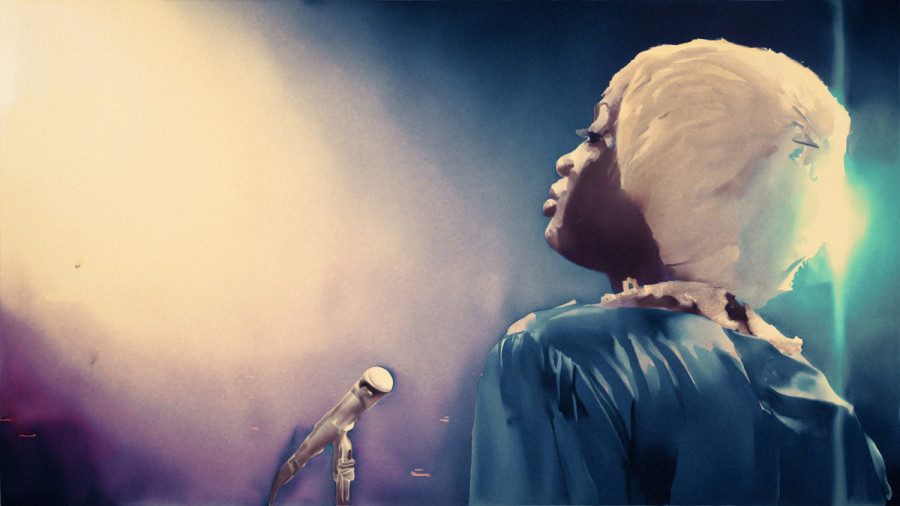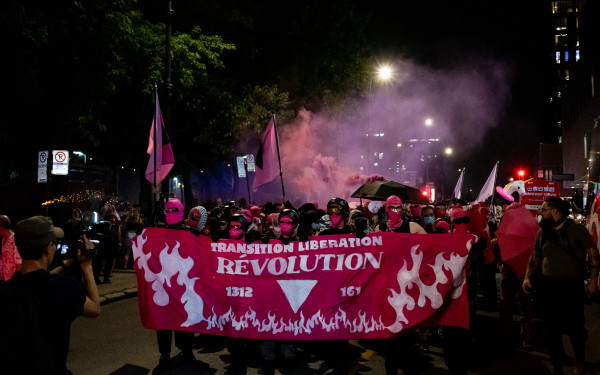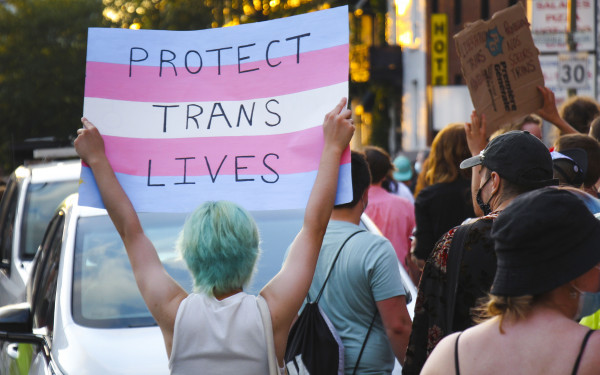Any Other Way revives the voice of a trans music icon
The National Film Board of Canada presents a stunning new documentary on R&B Jackie Shane
Any Other Way: The Jackie Shane Story, released on Mar. 12, was screened at the National Film Board of Canada (NFB) building on Nov. 29 in Place des Arts, Montreal.
Jackie Shane, a trans Black artist who left an indelible mark on R&B in the 1960s, is finally given her due in Any Other Way: The Jackie Shane Story.
Directed by Michael Mabbott and Lucah Rosenberg-Lee, the film dives deep into Shane’s life and legacy, bringing historical material, artistic animation and personal reflections to a deeply moving portrait. Presented by the NFB as part of Montreal’s Image+Nation Festival Film LGBT2SQueer Montréal, this documentary is both a celebration and a reclamation of an underappreciated transgender icon.
“Live and let live,” was Shane’s motto. As someone who was born male in Nashville, Tennessee, and later transitioned to an extravagant and unapologetic woman, the R&B star had embraced her femininity without shame or remorse since childhood. Luckily for her, her aunt, who raised her, loved and supported every bit of her personality, pushing her to show her genuine and unfiltered self to the world.
From its opening moments, the documentary immerses viewers in Shane’s world with an animated sequence showing her humming soulfully in her home, setting a vinyl of her tracks on a turntable. The animation transitions seamlessly into a depiction of Shane performing on stage, still animated.
Throughout the film, the choice to rely heavily on rotoscope animation is ingenious; it compensates for the scarcity of archival footage and allows for a more subjective, emotional interpretation of Shane’s experiences. They breathe life into her story in a way that feels equally emotional, nostalgic and dramatic.
“We hope that [the animations] made the audience feel that they were right there with Jackie,” said co-director Mabbott, who knew Shane personally after conversing with her over the phone during the last year of her life.
Mabbott explained that there were some challenges to the making of the film.
“The hero of our story was not here to be filmed and interviewed,” he said. Not only that, but Shane only performed live once on camera, which was on the show Night Train to Nashville in 1965.
The directors were able to overcome these challenges using the 25 hours of recorded conversation between her and Mabbott, and the incredible archive she left behind, including a handwritten autobiography.
“There were over 1,000 photos, reviews, advertisements and diaries,” Mabbott said.
The narrative unfolds through Shane’s own voice, using audio recordings of her recounting her life, alongside excerpts from her diary and collaged photographs.
“There’s something about Jackie’s voice, the intimacy of the conversation and her humour, that does something to an audience as it did when she was performing,” Mabbott said. This approach captures the essence of Shane’s identity and life story, capturing her charisma, her struggles and her artistry.
Shane’s story might have gone forgotten if it weren’t for this documentary. After her death, Mabbott and Robensberg-Lee sought her family’s permission to make the film. The two discovered that her descendants had no idea who she was.
“That family had no idea that Jackie existed, and they lived only a couple blocks away from her,” Mabbott explained.
She grew up in a very conservative town, in a very religious family. While the woman who raised her had the acceptance and level of understanding that allowed Jackie to become the woman she was, other family members did not.
“They hid her and didn’t talk about her,” Mabbot said, “because these were times where if there was a gay person in the family, you just didn’t mention them.”
Shane was truly talented right from the start. Her powerful voice, drumming skills and electrifying stage presence drew crowds from Nashville to Toronto. By 1963, she was a bona fide sensation. Wherever she walked, crowds poured out behind her, as she performed at various clubs throughout Nashville, Montreal, Boston, Toronto and numerous other cities across North America.
Yet Shane’s career was not driven by a quest for fame. She prioritized authenticity over recognition, often refusing to appear at famous venues or on acclaimed shows that had racist or hypocritical values, or asked her to downplay her queerness.
“Take me on my own terms or don’t take me at all,” quotes a music historian in the film, capturing her ethos.
As dangerous as it was being an openly queer Black performer, Shane was never shy to be herself.
“The resistance and the evil that she would have faced at that time, being who she was, would have been a far greater challenge than I think people from our generation could ever understand,” Mabbott said. “I think that the courage and dignity that she had is just an example that we need to see every day. I know I do.”
Shane wanted her story to be told, explained Mabbott.
“It needed to be told because the world is in a place where it’s not accepting, and there’s still so much fear, anger and intolerance,” he said. “The fact that her history had been erased was a big motivator for us. I think that it’s our job to find stories that haven’t been told.”
As for her role in the queer community, Shane was a pioneer.
“To have somebody who stood up for their truth and had the integrity and courage to do what they wanted on their own terms is something really important for the world in general,” Mabbott said.
Shane wrote in her autobiography, “I was born, but I have never lived.” It’s a statement that resonates all too well with past and present people like her, who live in a world too dogmatic to let true liberty thrive.


_600_832_s.png)

_600_375_s_c1.png)


_600_375_90_s_c1.jpg)